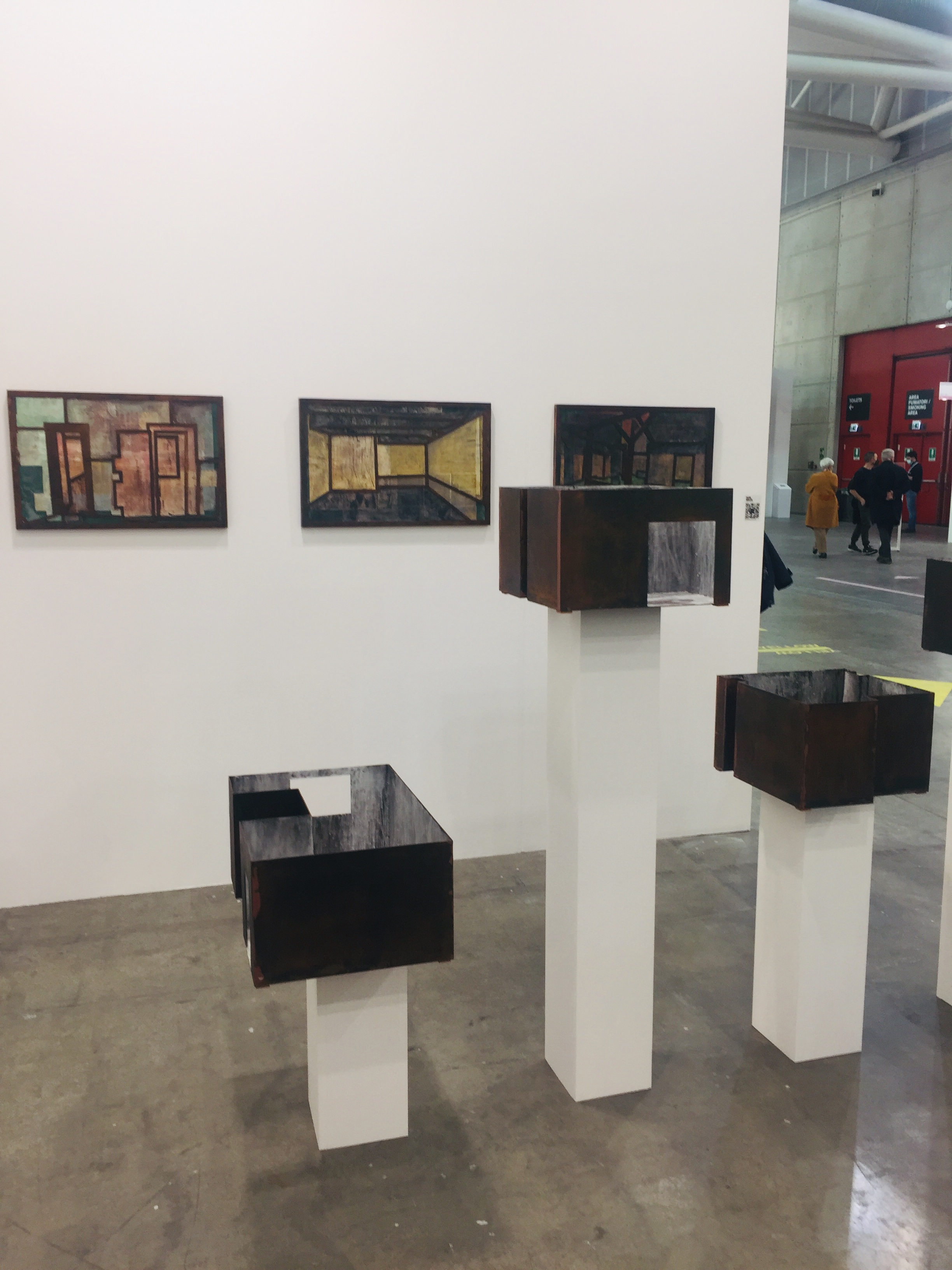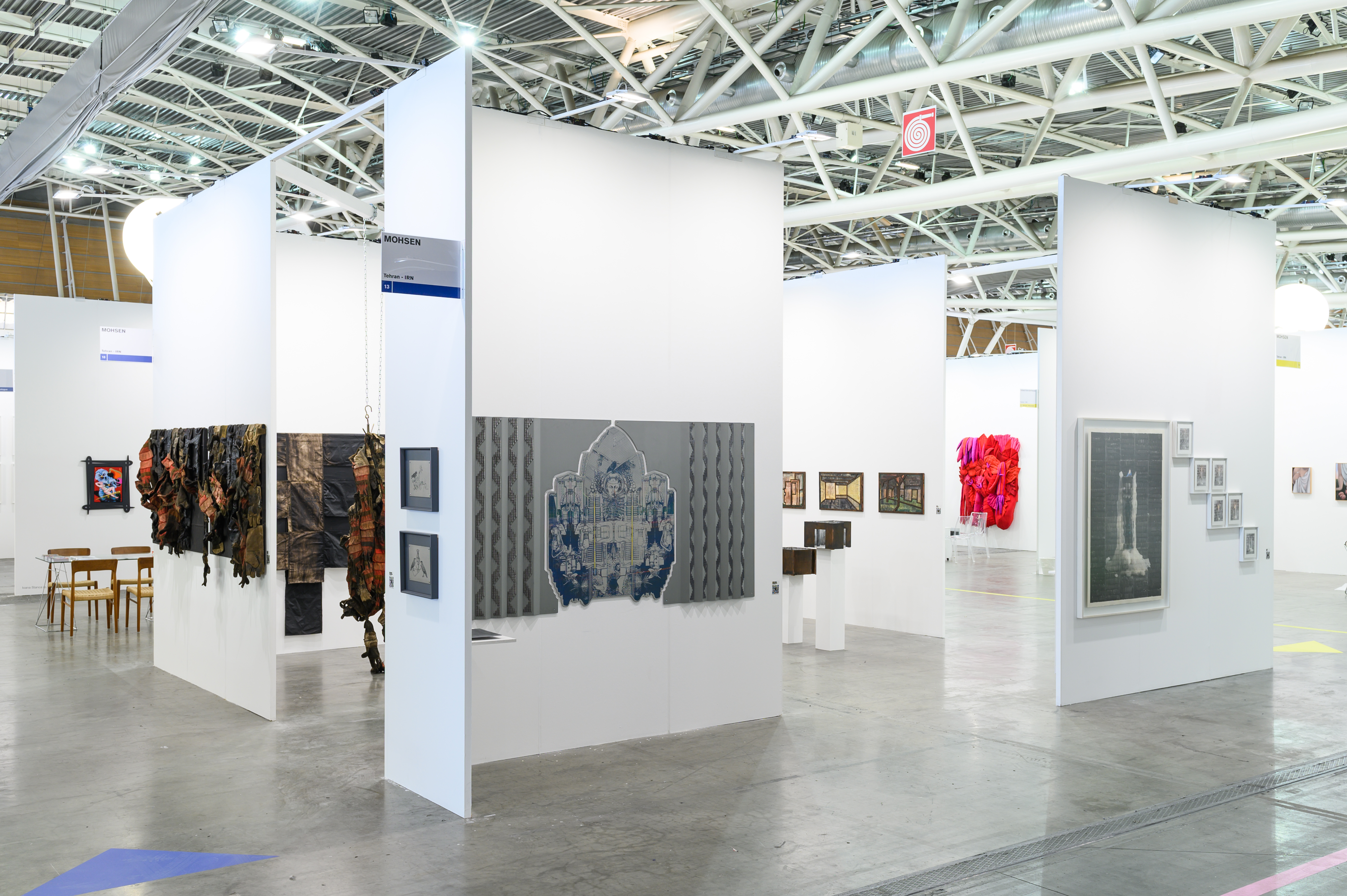The Gallery represents a first-hand account by its artists as a self-portrait of a generation who were conceived in the womb with dread and anxiety.
By Camilla Delpero
Talk about your project exhibit in Artissima.
For its second participation in Artissima, Mohsen Gallery represents a first-hand account by its artists as a self-portrait of a generation who were conceived in the womb with dread and anxiety. Sasan Abri, Majid Biglari, Samira Hodaei, Amir-Nasr Kamgooyan, and Behrang Samadzadegan are representatives of a young generation who are not only struggling to deal with the difficult situation they are currently facing, but are also endeavoring to transform, manipulate, and modify their circumstances so as to achieve their personal and generational dreams and aspirations: a free fall from the childhood dreamland into the depths of a reality, the opposite of which seem to have been promised.
The artistic practice presented by these five artists ranging from different media (drawings, prints, paintings, and sculptures) seems to be the result of the life and experience of a generation born in a tumultuous period in the Middle East, during which even the simplest decision for everyday life is extraordinarily determined by the challenging circumstances outside. Indeed, each artist is a simple, familiar allegory of a generation that are unique and extensive, despite their common concerns and anxieties that stem from their sterilized geographic location, the way they treat media, their narrative style, and their individual perception of reality.
Sasan Abri is an artist with his heart bent toward memories. With his unique photo printing technique and similar to a man on a remote island waiting to be salvaged, he counts the days by scratching on paper, like tally marks on a prison wall, reconstructing events as he remembers them. Abri’s works are like mourning rituals for a wounded past and a hope for being recovered. Just when the artist began to unravel the cocoon of his personal isolation, the world faced a crisis in which humans had to move away from each other to stay close. In this collective isolation, “These Days” and “Loneliness” are a reflection of the shared experience of loss and loneliness such as the times of quarantine.
In Majid Biglari’s work, hiding visual codes and gradually injecting essential questions into the audience’s mind leads to the obfuscation of the border between truth and reality. In “Soot, Fog, Soil,” the audience joins the artist in the questioning process: Can one find a real relationship between himself and a dreamland in the mind through migration? Or, is possible to wash away the traces of dirt from a land by simply leaving it? Much like his peers, who gather recollections from fragments of events, with his pasting and assemblages made of recycled materials, he examines war, technology, and the bleak fate that discovery of oil has brought upon the Middle East.
Samira Hodaei is now living between Berlin and Tehran. She has been focusing on examining the huge gap between the golden dream of oil and the reality of the corruption it brings. In her work, Samira recreates the luncheon cloth that Iranian grandmothers spread with good wishes and blessings for their families. With the help of the same women and with a similar approach to Majid, yet using more flexible materials, she sews, layer by layer, cashmere luncheon cloths and sacks of rice, dates boxes, and then paints and covers them in her style. Between these layers, she conceals her childhood memories and attachments from the eyes of the audience. She tries to get through her complex and layered narrative, both to alleviate her sense of nostalgia, and to create a therapeutic experience.
The works of Amir-Nasr Kamgooyan reflects a state of unity among contrary forms of the universe that “un-define” the border between existence and non-existence, organic and inorganic, sleep and wakefulness, remembrance and oblivion. By taking a close, hard look at tools and plants, he portrays unity in a coincidental manner by placing mechanical people in an asymmetrical symmetry between a multitude of plants, birds, and large/tiny creatures. In continuation of his previous series, these works have taken an intemporal, disembodied path, with no trace of the present, while not belonging to the past or the future.
The work of Behrang Samadzadegan is inspired by the history of the 1979 revolution in Iran. He creates imaginary pictures and stories based on pictorial documents to investigate stories of the lives of individuals possibly affected by the repercussions and consequences of the revolution; particularly those that are excluded in documents and photos. Accordingly, his stories appropriate narratives and motives from classical and contemporary literature as well.
Considered side by side, the works of these five artists, as well as their lives, are shaped under the compulsions of giving up their desires, as they seek to fulfil their dreams anywhere but their homeland; whether in a material heterotopia or a surreal, hypothetical world. It is a courageous confrontation with the overwhelming power of destruction, using the only weapon they possess: their minds. It is tantamount to stripping away their inwards to make manifest what is still the source of hope and passion for creating and carrying on.

A short description about Majid Biglari’s artwork?
It is the second time we are exhibiting Majid Biglari in Artissima. We had solo presentation of his work in a Dialog Section in 2019. This year, we are showing his new body of works along with his previous series. In Majid Biglari’s work, hiding visual codes and gradually injecting essential questions into the audience’s mind leads to the obfuscation of the border between truth and reality. In “Soot, Fog, Soil,” the audience joins the artist in the questioning process: Can one find a real relationship between himself and a dreamland in the mind through migration? Or, is possible to wash away the traces of dirt from a land by simply leaving it? Much like his peers, who gather recollections from fragments of events, with his pasting and assemblages made of recycled materials, he examines war, technology, and the bleak fate that discovery of oil has brought upon the Middle East.


